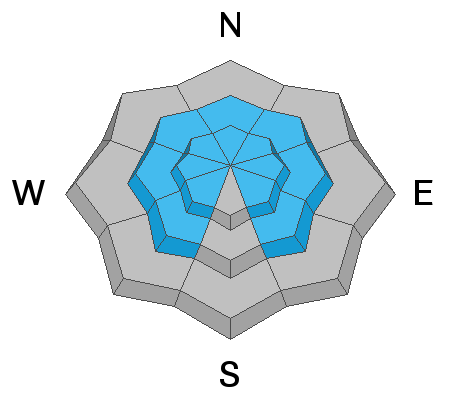Supreme area of Alta Ski Area is now closed to uphill/downhill travel. The summer road to Catherine's Pass will remain open.
Thanks to the generous support of our local resorts, Ski Utah, and Backcountry, discount lift tickets are now available. Support the UAC while you ski at the resorts this season. Tickets are available
here.
This morning, there is an inversion in the mountains with a range of temperatures in the mid to upper-teens F. Winds are west northwesterly. At mid-elevations the winds are averaging10-15 mph, with gusts in the teens and low 20's mph. At upper-elevations winds remain fairly strong, averaging in the 20s mph with gusts in the upper 40s mph.
Yesterday, the Cottonwoods picked up another trace amount to 2" of snow bringing the snow totals since Thursday morning to 8-19". Water totals are pushing 1" in areas that received the most snow.
For today, expect mostly-cloudy skies with little chance of precipitation. Temperatures will reach the mid to upper 20s F. Winds will be elevated and northwesterly, averaging in the teens to twenties across the board with gusts up to 35 mph at mid elevations, and gusts up to 55 mph at 11,000'.
Week in Review: Our first
Week in Review - where we summarize snow and avalanche conditions for the past week - has been published.
There were nineteen human-triggered or natural avalanches reported Friday. Many of these avalanches were large, up to 400' wide, and triggered remotely (from a distance) failing in weak faceted snow that is now buried 18-30" deep. Overall this, in combination with the widespread cracking and collapsing being observed, is a huge indication of the sensitivity of our weak snowpack structure.
Photo: Mark White, Lower Cardiff Fork near the mine. Triggered remotely from 10 feet away. Even small slopes were sensitive to remote triggers yesterday.
Find a full list of yesterday’s avalanches
here.
A video below from Observer Dave Coyne showing widespread, likely natural activity throughout Grizzly Gulch Proper.











